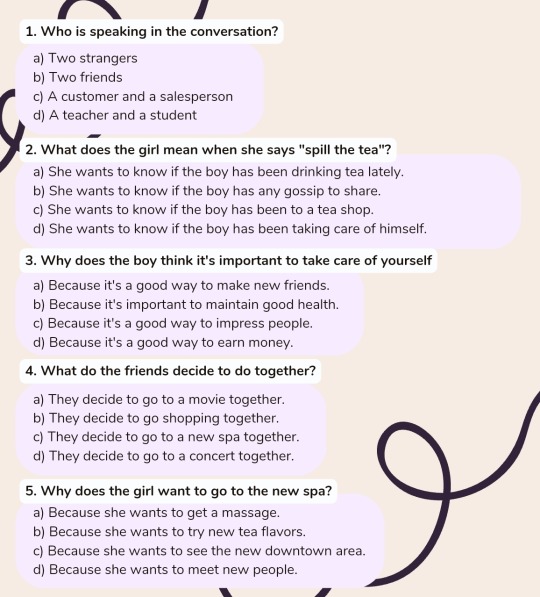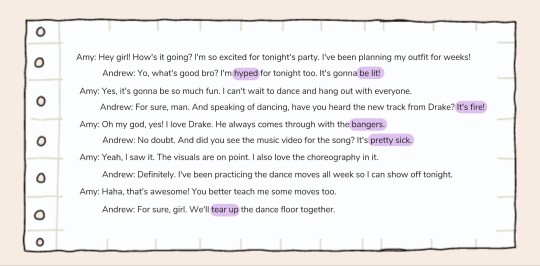Don't wanna be here? Send us removal request.
Text
Let's talk about Genderlects:
Gender refers to the social attributes and opportunities associated with being male or female and the relationships between women and men, girls and boys. These attributes, opportunities, and relationships are established and learned in society, are context or time specific, and can change, for example: the fact that women do more housework than men. Gender determines what is expected, allowed, and valued in a woman or a man in a given context. "Man" and "woman" are sexual categories, while "masculine" and "feminine" are gender categories. Gender groups the roles and functions assigned respectively to women and men. It can be modified in and by culture.
We can define generolect as the discursive dialect of gender, i.e., the differences in style between culturally conceived feminine and masculine discourse. Generolects are not ascribable to men or women as biologically determined groups, but correspond to the cultural characterization of what types of expressions and attitudes are considered feminine or masculine in a specific sociocultural context, and therefore what types of behavior are expected of men or women. They are therefore cultural stereotypes, which are used to judge people's behavior as feminine and masculine, expecting "coherence" between biological sex and gender style, encouraging in various ways the subjects to behave in a manner considered "coherent", in some cases even urging the subjects to behave as expected, negatively sanctioning those who are seen as "incoherent", or "deviant" from the expected behavior.
Generolects, then, are codes that should be seen as symbolic cultural tools, composed of prototypes endowed with efficacy to produce culturally expected behaviors, and that fundamentally serve to classify discursive acts, as well as bodily acts (gestures, postures, gait, etc.), as more or less feminine or masculine. In short, in a given culture, the ways in which real subjects, men and women, use language, and the repertoires of gestures and attitudes, are interpreted or "indexed" as feminine or masculine on the basis of generolects as cultural codes. It is necessary, in the first place, to distinguish between the actual discursive practices of the subjects and the ideology of these practices, because although in everyday life individuals of both sexes tend to exhibit in their discourse generolect characteristics of the opposite sign to their gender identity, whether occasionally or habitually.
This is not, moreover, a mere assumption, but a real imposition, since the man who does not consistently follow this norm will be considered suspect in his virility, and will therefore be stigmatized as "effeminate" and negatively sanctioned. Likewise, the woman who does not express herself, dress and move, in general, in accordance with the cultural norm of feminine style, that is, the one who does not act in a "feminine" way, according to the ideological definition of femininity, will be labeled a "tomboy" and will receive the weight of censure from her milieu. Moreover, we are referring to cultural stereotypes that have great power, not only repressive, but probably also productive of gender identities and styles themselves, to the extent that individuals performatively appropriate cultural norms.
What are generolects like, then, and how can we describe them? The characteristics of feminine and masculine generolects differ, as we have already said, between cultures and subcultures; they also vary according to other identity dimensions such as class, ethnicity, race, occupation, generation, etc., and change over time. But there seem to be certain predominant tendencies in what we call femininity or masculinity. We can even find similarities in the description of femininity and masculinity in two very dissimilar authors, Deborah Tannen (1990) and Deborah Cameron (2005).
Vista de Los estilos de género y la tiranía del binarismo: de por qué necesitamos el concepto de generolecto | La Aljaba. Segunda Época. Revista de Estudios de la Mujer. (n.d.). https://cerac.unlpam.edu.ar/index.php/aljaba/article/view/1749/4577
0 notes
Text

Listen to a conversation and answer the following questions

0 notes
Text

It's time to practice a bit of your writing skills!
Write a letter to your friend tells him/her about your experience learning on this website. Use at least 7 genderlects you have learnt in this lesson. Write between 40 - 60 words.
Write your letter in the comment section below, so that we can provide you feedback of your work. :)
0 notes
Text

Read the conversation between two friends and match the generolect with their meaning.


Write your answers in the comments section below
0 notes
Text

Time to speak 🗣️
Look at the following charts carefully. Select one chart from below, and create a conversation using the genderlects shown in the picture. For this task, you need to record a video of yourself for about 1 minute, so that we can provide feedback of the activity.
We'll leave a google drive link in which you must upload your video. You can also record an audio of the conversation.
Here's the link:
0 notes



